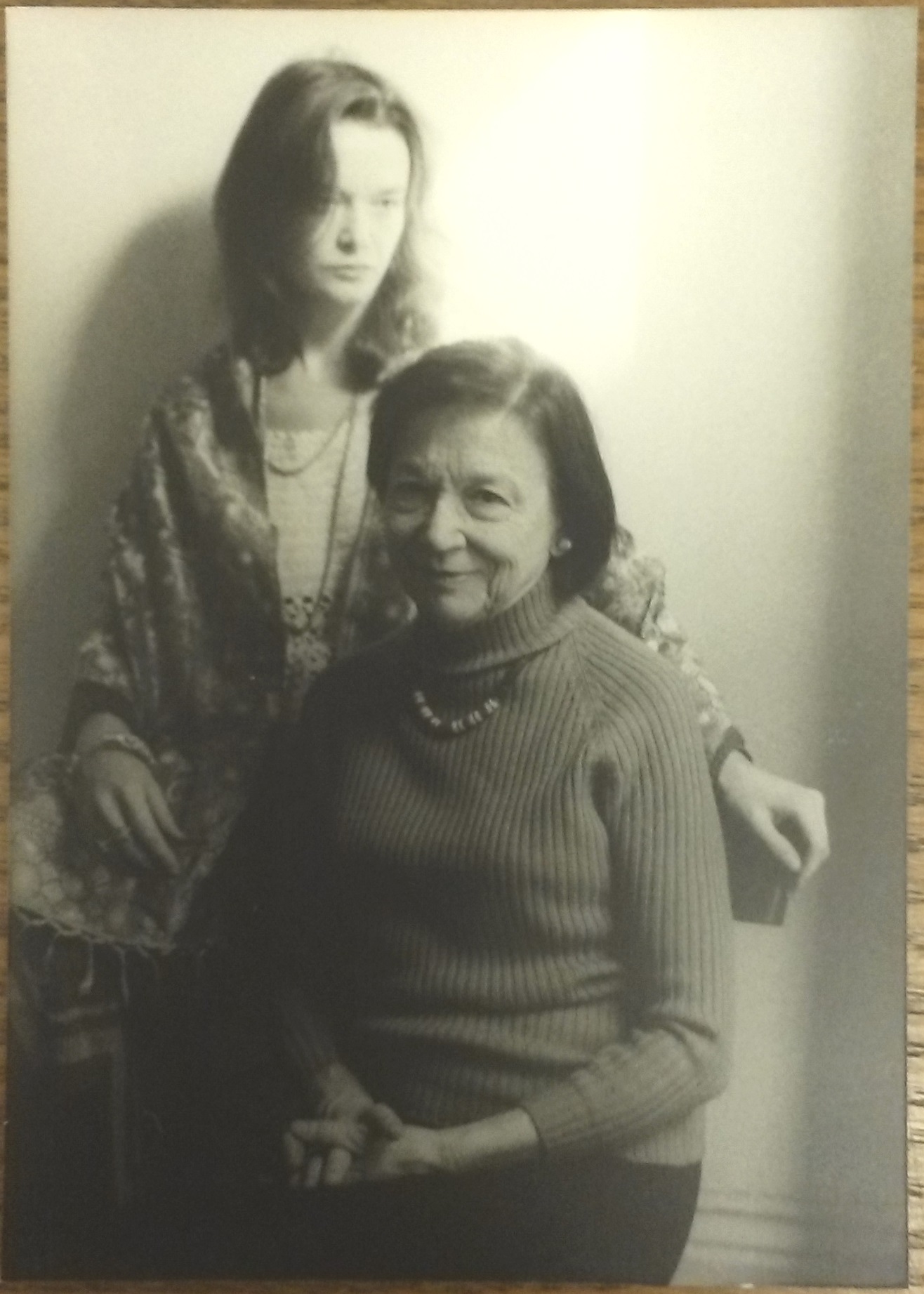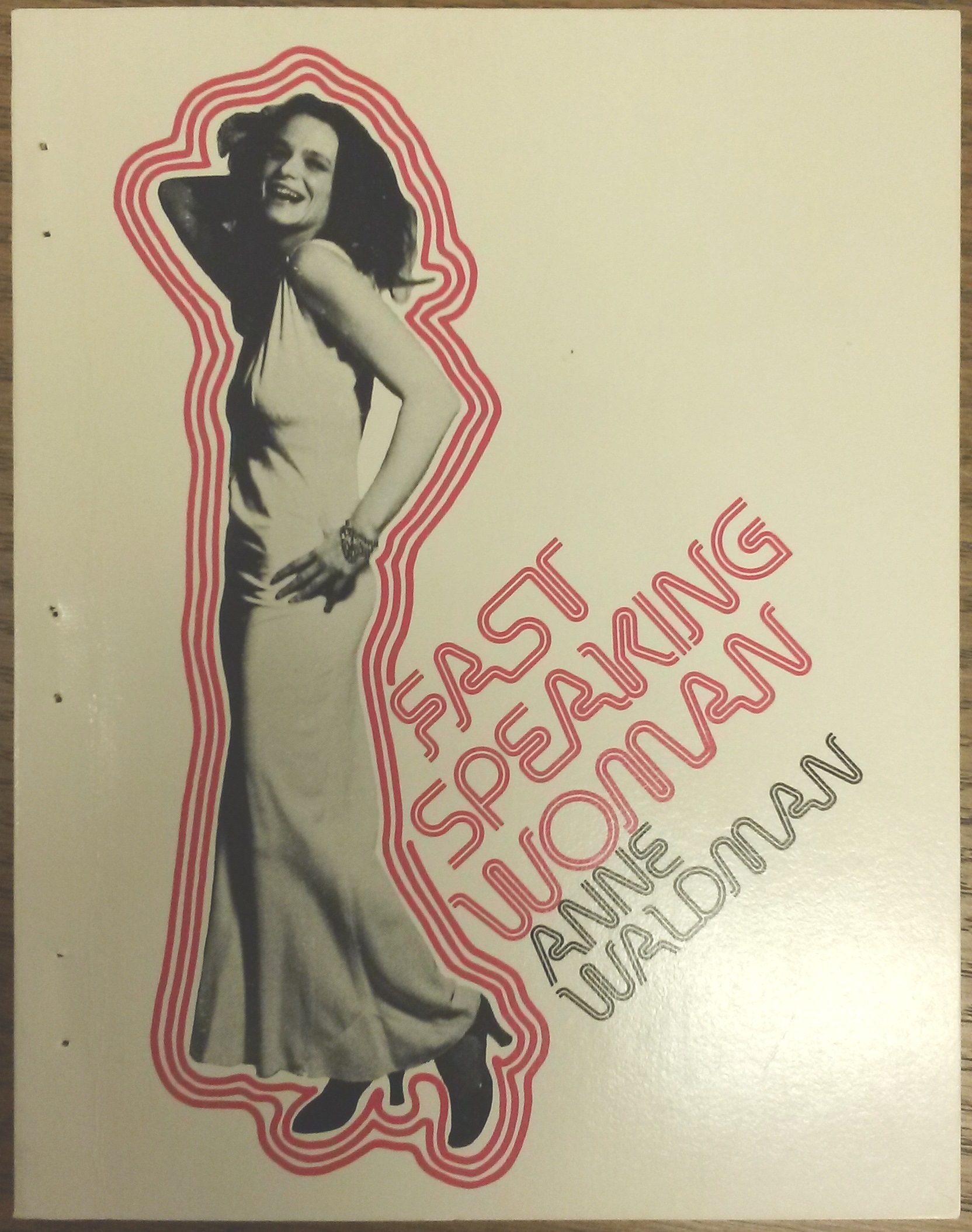In culmination of this year’s Poetry at Literati series, Anne Waldman, whose literary archive is housed in the University of Michigan Special Collections Library, will be performing tonight with fellow poet Anne Carson at 7:30pm at Ann Arbor’s Literati Bookstore (124 E. Washington).
Perhaps best known for her role as co-founder with Allen Ginsberg of the Jack Kerouac School of Disembodied Poetics at Naropa Institute, Anne Waldman has published more than 40 books and is renowned for her poetry performances. In 1976, Aram Saroyan wrote, “Of all the poets of my generation, none has done more than Anne Waldman to bring poetry before the public at large.”1 In the decades since, Waldman has continued to expand audiences’ perception and appreciation of poetry. In an interview following a 2007 reading in Wuhan, China, Waldman explains her approach to performing poetry:
There’s a term in Thai poetics - “Ti-bot” - which refers to a gong being struck -- there’s an un-locking of the oral power--or “sounding” of hte text, that seems a necessary component to experiencing it fully. One uses the voice as an instrument to “strike” the text...There’s inherent rhythm in the language, and I like to punctuate the consonants and draw out the syllables and extend the whole range of sound in my own way. Ambiance of the room and audience is a factor. No two performances are alike, they are not rehearsed. But they are rituals in a sense. Language acts become re-done, and meant to conjure states of mind and possibilities, and to wake people up to poetry as an active condition. As an experience in and of itself. The point is to get inside the immediacy of the sound and meaning and the various psychological states the words embolden. 2

Formal portrait of Anne and her mother photographed by Gerard Malanga in 1978. Anne Waldman Papers, Photographs Subseries, Family and childhood, 1946-1976 and undated.
In the same interview, Waldman traces one strand of her interest in performing to her mother. A translator of Greek literature, Frances LeFevre Waldman had worked with artists and poets in the 1930s who sought to bring ancient Greek theatre to modern audiences and she later shared her love of poetry and drama with her daughter. Another strand of inspiration stemmed from the 1965 Berkeley Poetry Conference. In her essay collection Vow to Poetry, Waldman describes the festival as “a revelation” and particularly recalls the power of Massachusetts poet Charles Olson's reading: “Up there without props, without a script, every idea of text or presentation tossed to the wind...I could really see the poet as tribal shaman, speaking and moving and being embarrassing not just for himself or herself, but for you, the audience.”3
Mastering performance, however, took time. Recounting one of her early readings in the mid-1960s, Waldman remembers thinking “This isn’t the real voice,” and realizing that the voice - “an ageless voice,” her voice - was waiting inside her and that she would “have to grow up to the voice and its wisdom.” Gradually, she gained experience and confidence:
I felt in a way that once I was speaking the words and making these sounds that they were no longer mine. My body was a receptacle. My voice was everywoman’s cri de coeur. I’ve always been on the track of the wizened hag’s voice, the tough tongue of the crone free of vanity and conditioning. She’s terrifying, liberating at the same instant. She’s exhausted her hope and fear. 4

Cover. Fast Speaking Woman & Other Changs by Anne Waldman. City Lights Pocket Poest Series #33, 1975. Special Collections 828 W1643fa
One of Waldman’s best-known works, the title poem of Fast Speaking Woman, was directly inspired by the chanting of Mazatec shamaness Maria Sabina. The oral traditions that the poem draws upon are evident in its “vibrating incantatory repetitions of the declarative enunciation ‘I am:’"5
I’m a shouting woman
I’m a speech woman
I’m an atmosphere woman
I’m an airtight woman
I’m a flesh woman
I’m a flexible woman
I’m a high-heeled woman
I’m a high-style woman.
Waldman herself describes the poem as “a female proclamation, reclaiming the body, and also being Everywoman."6 Today, Anne Waldman continues to embody the poet-as-shaman as she uses her poetry and her voice to explore themes of personal expression, feminism, and political activism to inspire and challenge her audiences.
Sources:
1. Ann Charters, "Anne Waldman," Dictionary of Literary Biography [Gale Database]. Accessed 20 May 2015.
2. Xin, Zhou, "Myriad Directions: Poetry in the Public Sphere. An Interview with Anne Waldman on Poem Reading and Others," Foreign Literature Studies (2008): 2-3.
3. Anne Waldman, "My Life is a List: Socratic Rap with Questions and Answers (Naropa Institute, July 29, 1976)," in Vow to Poetry: Essays, Interviews & Manifestos (Minneapolis: Coffee House Press, 2001), 27.
4. Anne Waldman, "Vow to Poetry: A Conversation with Randy Roark, Boulder, Colorado, 1991," in Vow to Poetry: Essays, Interviews & Manifestos (Minneapolis: Coffee House Press, 2001), 108-109.
5. Nancy M. Grace and Ronna C. Johnson, Breaking the Rule of Cool: Interviewing and Reading Women Beat Writers (Jackson, MS: University Press of Mississippi, 2012), 257.
6. ibid. 169.